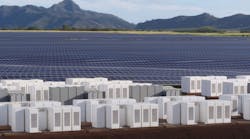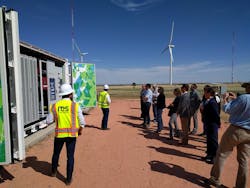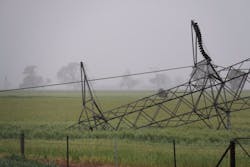Should Energy Storage Have a Place in the U.S. Infrastructure Budget?
The White House recently announced that $200 billion in tax cuts will be allocated through federal funds to incentive private companies to re-build US infrastructure. The expectation is that the resulting improvements will be ultimately valued at $1-trillion. While this is hardly a plan that states and cities can currently run with, a 50-slide document released in January offers at least a small amount of insight as to where these funds may go.
Fifty infrastructure projects that have potential to restore value to the economy are listed in the document. For each project, the document outlines estimated costs, potential number of jobs created, sources of funding (federal, public, and private), and a summary of a projects’ long-term value. Most projects in the document are related to the construction and maintenance of waterways and dams, mass public transit, highways, and pipelines. 50% are privately funded.
Out of the 50, seven projects focus on electricity, and five focus on “clean power”. Two projects led by private company, Anscuntz are covered in the report, with the TransWest Express Transmission line spanning 725 miles to transport electricity from 1000 wind turbines at the Chokecherry and Sierra Madre wind farm in Wyoming. The transmission leads to distributed load centers in Las Vegas, southern California, and Arizona. Another transmission line project for transmitting renewable energy in mid and eastern southern states is listed in the report, along with two more projects aimed at restoring hydropower plants, one of which would supply power to the NYC metro (slide 21).
But only one project in the document addresses grid modernization and implementation of storage system for renewable energy. This is the grid modernization project in southern California, which was initiated to cut down on the use of fossil-fuel backup generators during grid failures, and expedited after a natural oil shortage caused blackouts in Aliso Canyon.
The Energy Storage Association predicts that buildings, HVAC, and transportation will add more than 3,500 TWh in grid loading by 2050. As an aging grid requires upgrades, adding automatic controls can help to meet the demands of a growing population. The ESA predicts that energy storage will be an important part in this, helping to mitigate grid disruptions that are likely to become more frequent and severe. The association envisions 35 GW of energy storage to be added to the grid by 2025.
The U.S. needs storage to reap the benefits of its existing and future renewable energy infrastructure. In 2016 alone, more than 7.8 GW of U.S. wind energy was installed, and now exceeds 72 GW installed capacity. 15 GW solar energy infrastructure was installed in the U.S. in 2016. By 2022, corporate-procured renewables are expected to reach 60 GW, and businesses and states will continue to invest in renewable energy infrastructure.
There is already a large sector of research dedicated to automated controls for power distribution and energy storage. Through its Grid Modernization initiative, the National Renewable Energy Lab researches storage models, automated power distribution to localized “microgrids”, and advanced power electronics for smart voltage and frequency regulation. It researches storage systems that can not only back up microgrids, but could also supply energy to the main grid during power outages. It explores short-term energy storage for active wind power controls to meet Department of Energy goals of 20% wind energy by 2030.
The NREL teams up with Renewable Energy Systems to test a RESolve energy storage unit containing Siemens "smart" transistors and a grid-control interface to regulate frequency to local microgrids. Using energy from a nearby wind farm, the research aims to build storage and control systems so that renewable resources can become a more reliant source of power for modernized grids.
The bottom line is that no matter how many roofs are lined with solar panels, or hills with wind turbines, reliable energy-storage infrastructure will still be needed to meet the volatile energy demands of a growing population. Being too quick to connect renewable resources to the grid without reliable storage and controls could lead to problems, such as those experienced in South Australia after a storm knocked out 22 of its transmission lines during a storm last September. The state experienced costly blackouts when backup renewable energy was not enough to support the grid.
South Australia increased its renewable energy connected to the grid; but when a power failure knocked down many of its transmission lines from fossil fuel resources, intermittent solar and wind energy were not reliable enough to sustain power during peak hours, resulting in blackouts last Spring. (Courtesy of ABC)
So rather than simply connecting renewables as a baseline resource to the grid, it is important that the US invests in energy storage infrastructure. In addition to California, states including New York, Rhode Island, and Massachusetts are investing in grid modernization initiatives to fully utilize growing solar and wind energy. While other projects in the document are certainly high priority (such as the reconstruction of the Northeast corridor between NY and Newark Penn Stations), it will be interesting to see if federal funding goes toward any of these grid-modernization projects.
Be sure to participate in our Machine Design infrastructure survey by clicking here now.



